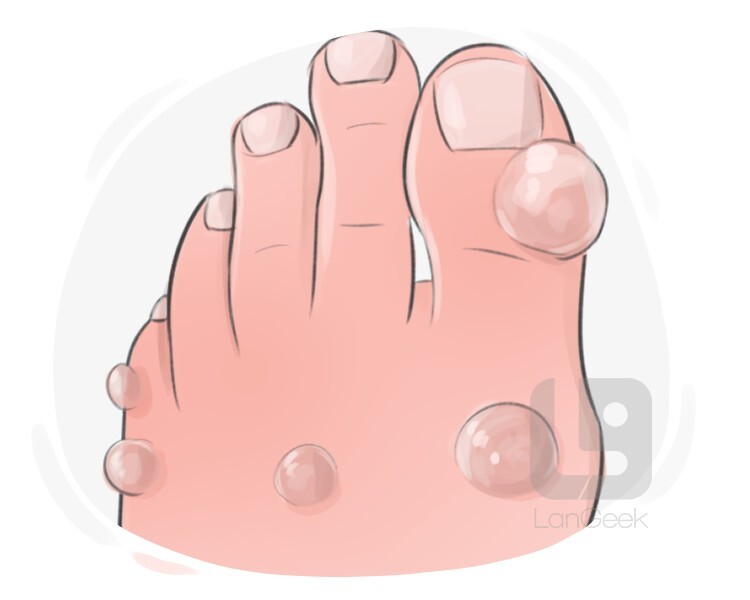Search
Select the dictionary language
What is a "blister"?
A blister is a small, fluid-filled bump on the skin. It forms when the outer layer of the skin becomes damaged, often due to friction, burns, or irritation. The fluid inside the blister helps protect the damaged skin and promote healing. Blisters can vary in size and may be painful or itchy. They usually heal on their own within a few days as the body reabsorbs the fluid and the skin underneath repairs itself. Avoiding further irritation and keeping the blister clean can help prevent infection and promote faster healing.
a swelling on a plant resembling the raised, fluid-filled bumps seen on skin
a bubble on a surface caused when a coating or applied substance fails to adhere properly
to develop small, raised pockets of skin filled with fluid, usually from friction, heat, or irritation
to cause painful, raised, fluid-filled sores on the skin
to subject someone or something to severe criticism or harsh verbal attack
Lexical Tree





























